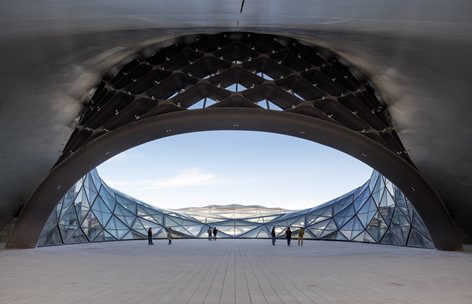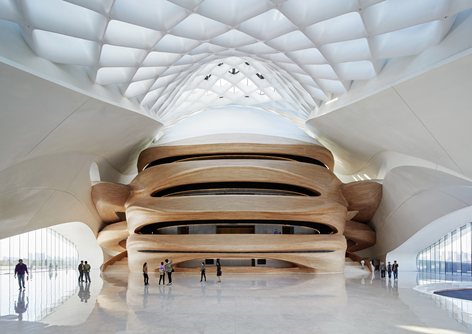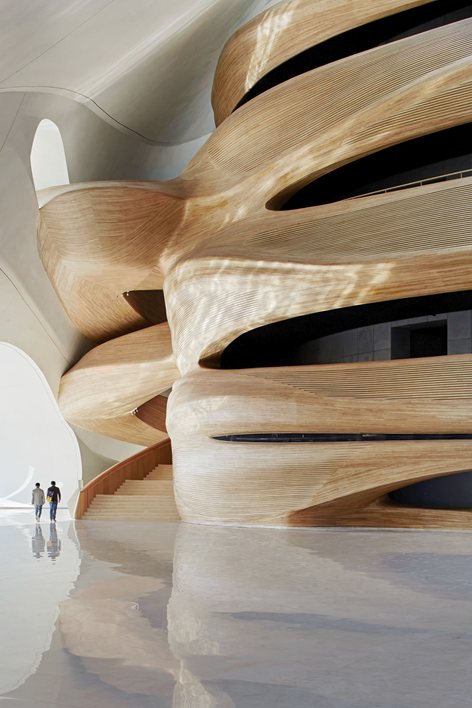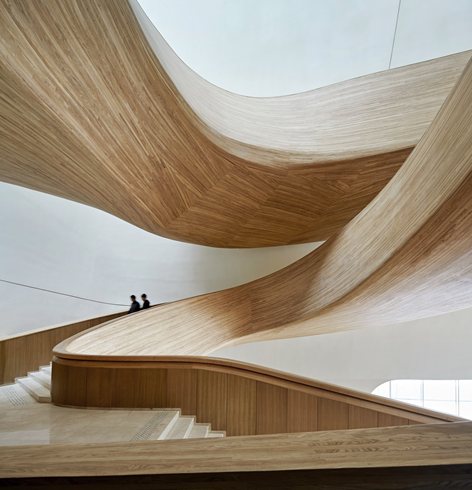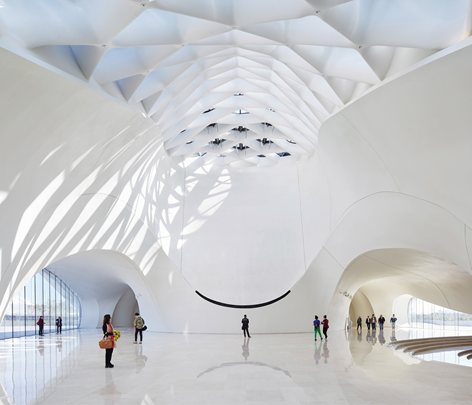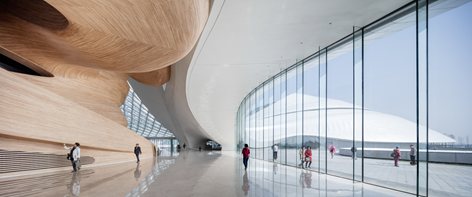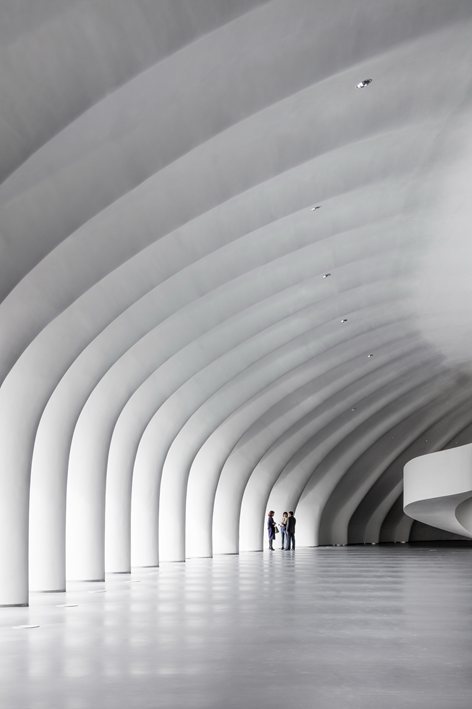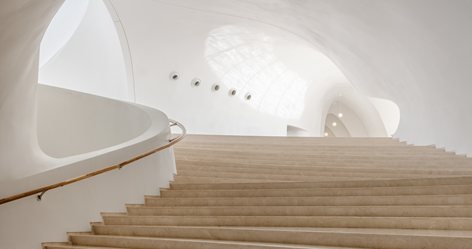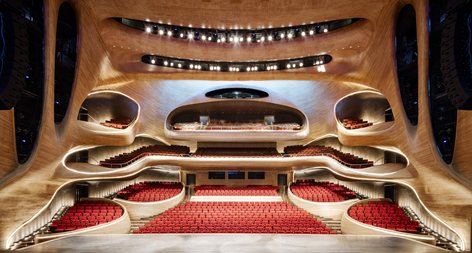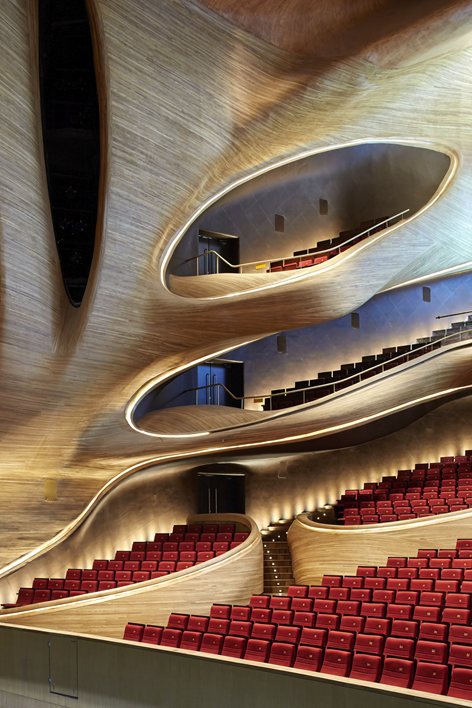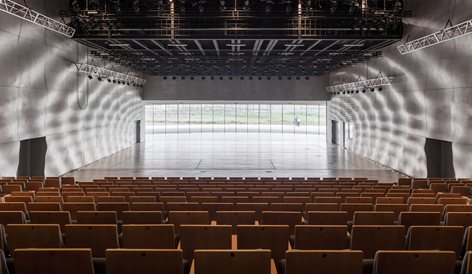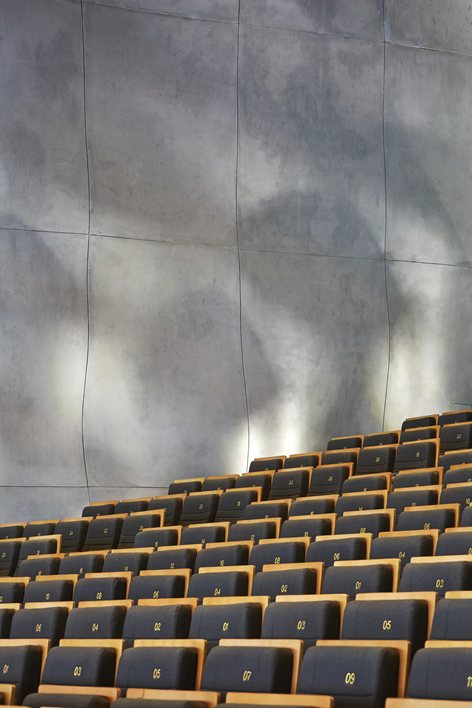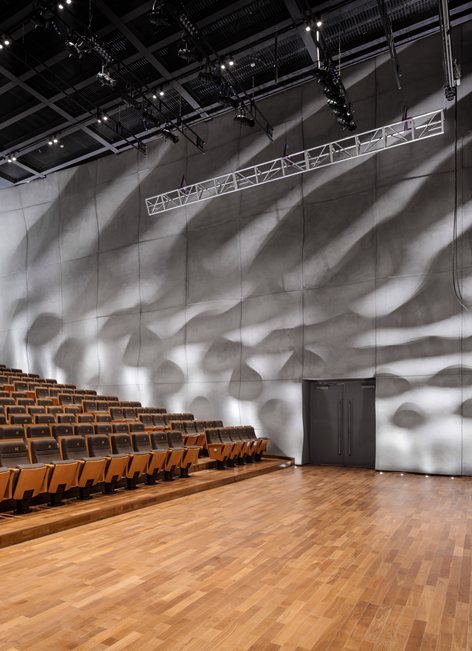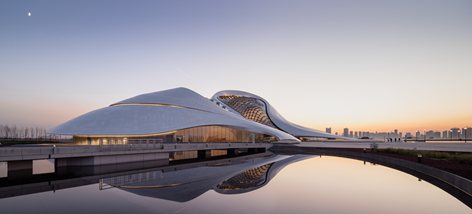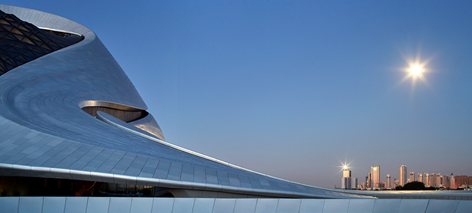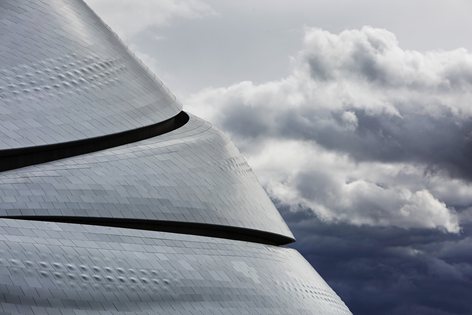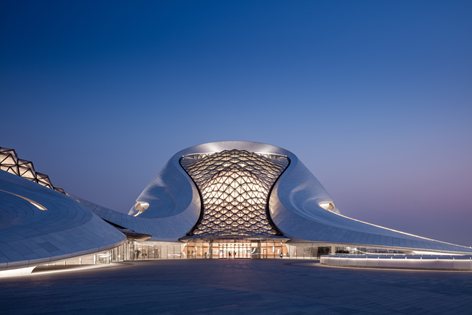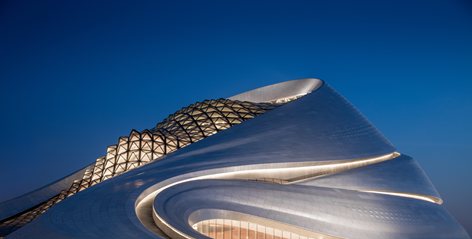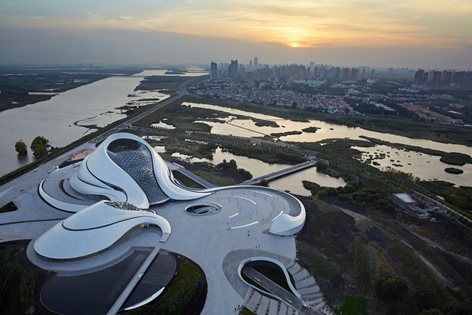北方城市力量与灵魂的建筑:哈尔滨歌剧院 [美国媒体]
哈尔滨歌剧院:镶嵌在哈尔滨湿地中的是,充溢着这座北方城市力量与灵魂的建筑——哈尔滨歌剧院。它的每个线条都张扬着自然的狂野,凝结着北地的严寒,如风蚀,如水琢,将这片土地的思想、艺术、文化与大自然融为一体。“我们想将哈尔滨歌剧院设计为未来的文化中心......
Harbin Opera House
哈尔滨歌剧院
Embedded within Harbin’s wetlands, the Harbin Opera House was designed in response to the force and spirit of the northern city’s untamed wilderness and frigid climate. Appearing as if sculpted by wind and water, the building seamlessly blends in with nature and the topography—a transfusion of local identity, art, and culture. “We envision Harbin Opera House as a cultural center of the future – a tremendous performance venue, as well as a dramatic public space that embodies the integration of human, art and the city identity, while synergistically blending with the surrounding nature,” said Ma Yansong, founding principal, MAD Architects.
镶嵌在哈尔滨湿地中的是,充溢着这座北方城市力量与灵魂的建筑——哈尔滨歌剧院。它的每个线条都张扬着自然的狂野,凝结着北地的严寒,如风蚀,如水琢,将这片土地的思想、艺术、文化与大自然融为一体。“我们想将哈尔滨歌剧院设计为未来的文化中心。在这个公共空间里,有激动人心的演出,有人、艺术与城市文化的融合,还有与自然环境的相依相存,”MAD建筑事务所创建者马岩松如是说。
On the exterior, the architecture references the sinuous landscape of the surrounding area. The resulting curvilinear façade composed of smooth white aluminum panels becomes the poetry of edge and surface, softness and sharpness. The journey begins upon crossing the bridge onto Harbin Cultural Island, where the undulating architectural mass wraps a large public plaza, and during winter months, melts into the snowy winter environment.
这座建筑的外部线条,参考了周边蜿蜒的地貌。最终,由白色铝板构成的曲面勾勒出了如诗般的边与面,刚与柔。跨过哈尔滨文化岛之桥,首先是被建筑围绕的宽阔广场,在冬季到来之时,便会与周遭的雪景相映成趣。
The architectural procession choreographs a conceptual narrative, one that transforms visitors into performers. Upon entering the grand lobby, visitors will see large transparent glass walls spanning the grand lobby, visually connecting the curvilinear interior with the swooping façade and exterior plaza. Soaring above, a crystalline glass curtain wall soars over the grand lobby space with the support of a lightweight diagrid structure. Comprised of glass pyramids, the surface alternates between smooth and faceted, referencing the billowing snow and ice of the frigid climate. Visitors are greeted with the simple opulence of natural light and material sensation—all before taking their seat.
通过概念性的设计,建筑将观者变成了表演者。甫一进入迎客厅,观者的身影便会穿过铺展开来的透明墙壁,与建筑起伏的外墙和户外广场联系在一起。抬头仰望,由轻质梁架支撑的水晶玻璃穹顶如同透明的金字塔,又如同寒日中的积雪与坚冰,时而圆润,时而棱角分明。在落座之前,沐浴在纯粹的自然光线中,体味材质变换带来的独特意境,这便是为来宾献上的最为高级的欢迎礼。
Presenting a warm and inviting element, the grand theater is clad in rich wood, emulating a wooden block that has been gently eroded away. Sculpted from Manchurian Ash, the wooden walls gently wrap around the main stage and theater seating. From the proscenium to the mezzanine balcony the grand theater’s use of simple materials and spatial configuration provides world-class acoustics. The grand theater is illuminated in part by a subtle skylight that connects the audience to the exterior and the passing of time.
歌剧院的主厅中,主要的内饰材料为木材,营造出如刻上自然印记的木块般温馨且亲密的氛围。水曲柳组成的木墙,温柔地包裹着主舞台和观众席。从舞台口到观众席的最高台,均运用质朴的材质和巧妙的空间结构,打造出世界顶级的音响效果。不仅如此,主厅墙上还特意打造了让外界光线畅通无阻的镂空区域,使观者即使身处室内也能与自然毫无隔阂,感受到时光的流逝。
Within the second, smaller theater, the interior is connected seamlessly to the exterior by the large, panoramic window behind the performance stage. This wall of sound-proof glass provides a naturally scenic backdrop for performances and activates the stage as an extension of the outdoor environment, inspiring production opportunities.
歌剧院除主厅外,还有一个较小的偏厅。偏厅的舞台背景墙,是一面巨大的落地窗,将室内与室外的景致无缝衔接。这面巨大的隔音玻璃墙让自然景观也成为演出的一部分,也令舞台成为了户外环境的室内延伸,以此激发出表演的灵感。
Harbin Opera House emphasizes public interaction and participation with the building. Both ticketholders and the general public alike can explore the façade’s carved paths and ascend the building as if traversing local topography. At the apex, visitors discover an open, exterior performance space that serves as an observation platform for visitors to survey the panoramic views of Harbin’s metropolitan skyline and the surrounding wetlands below. Upon descent, visitors return to the expansive public plaza, and are invited to explore the grand lobby space.
哈尔滨歌剧院使公众与建筑的互动,甚至参与到建筑之中。不管持票与否,公众都可以像在湿地其他地方散步一般,沿着凿刻在建筑外表面上小径漫步。当到达建筑的顶点时,观者会发现一片开放的露天表演场地,同时也是一处供人眺望哈尔滨城天际线和周围湿地风光的观景平台。沿小径折返,观者便又可以回到下方开阔的广场,或者去室内探索迎客大厅。
Surpassing the complex opera house typology, MAD articulates an architecture inspired by nature and saturated in local identity, culture and art. As the Harbin Opera House deepens the emotional connection of the public with the environment, the architecture is consequently theatrical in both its performance of narrative spaces and its context within the landscape.
MAD事务所的建筑师们汲取自然之魂、城市之灵以及这片土地上的文化与艺术后,所创造的这座建筑,已经超越了歌剧院的传统定位。令哈尔滨歌剧院成为了加深公众与环境情感的纽带,戏剧化地将表演空间与自然风光联系在了一起。
版权声明
我们致力于传递世界各地老百姓最真实、最直接、最详尽的对中国的看法
【版权与免责声明】如发现内容存在版权问题,烦请提供相关信息发邮件,
我们将及时沟通与处理。本站内容除非来源注明五毛网,否则均为网友转载,涉及言论、版权与本站无关。
本文仅代表作者观点,不代表本站立场。
本文来自网络,如有侵权及时联系本网站。
图文文章RECOMMEND
热门文章HOT NEWS
-
1
Why do most people who have a positive view of China have been to ...
- 2
- 3
- 4
- 5
- 6
- 7
- 8
- 9
- 10
推荐文章HOT NEWS
-
1
Why do most people who have a positive view of China have been to ...
- 2
- 3
- 4
- 5
- 6
- 7
- 8
- 9
- 10
